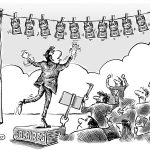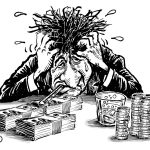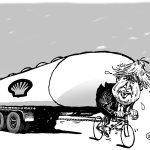America in March, heading forward
Joe Biden’s gigantic support plan is boosting the US economy once more, rejuvenating its economic model too?
“America is back!” has proclaimed Joe Biden. He seems to have given himself the means to accomplish so. First by succeeding in having a massive economic support plan adopted in almost its entirety – the third since the start of the pandemic – that a large majority of Americans approves. Then by accelerating the vaccination campaign, thus keeping his promise to see 100 million of his fellow citizens vaccinated (90 million have received a first injection to date) in the first hundred days of his mandate.
From an economic standpoint, the extreme bad weather in February, the wait for new aid checks after the end of the year holidays, do not allow us to faithfully retrace the state of the economy as spring approaches. A few leading indicators are more revealing: the preliminary PMI 1 indices for March in both industry and services, already well above their pre-crisis levels, continue to advance. The last weekly jobless claims, which have continued to decline, have returned below the pre-crisis threshold. We expect a clear improvement in employment in the spring and a further decline in unemployment, as domestic activity picks up.
The budgetary support measures were decisive in a country
where social shock absorbers are much less extensive than in Europe.
Would the current recovery mark the triumph of the American economic model combining extreme flexibility of the labor market, regained productivity and reduced taxation? Undoubtedly, the budgetary support measures have been – and will be – decisive in a country where social shock absorbers are much less extensive than in Europe. The initial shock of unemployment, which rose sharply in the spring, was followed by an equally spectacular drop, as soon as businesses and businesses reopened. The distribution of aid checks to households, the lengthening of the duration of unemployment benefits, the suspension of evictions and the adjustment of debts, made it possible to limit the extent of the recession. As household consumption is predominant in the US economy (over 70% of GDP), the effects of these targeted measures have been felt more widely than in China, for example, where consumption only accounts for nearly 40% of GDP. , in the face of investment, still a central lever of the country’s growth model.
The Biden plan is part of this continuity. However, it would only be the first step on the path to a broader and more ambitious policy, in line with the tradition of his most eminent Democratic predecessors, from Franklin Roosevelt’s New Deal to the Great Society of Lyndon Johnson.
President Biden intends to launch a more ambitious policy
of reducing inequalities.
Thus, the presidential team is already preparing a new budget plan, this time centered on the revival of major infrastructure works, worth 3,000 billion dollars. The President for his part did not hesitate to publicly support the formation of unions at Amazon, as well as to promote the increase of the minimum wage in the federal civil service (even if the measure was withdrawn from the previous budget project, it remains of news). It is supported by the Federal Reserve, whose change of direction in monetary policy objectives we have already indicated, and aligned with its Secretary of State for the Treasury, who, at his first hearing in Congress, unveiled his fiscal plan. President Biden intends to launch a more ambitious policy of reducing inequalities, refocusing the domestic economy and industry and promoting green growth.
In addition to the full opposition of the Republican Party, the Administration is already on its way to the moderates of the Democratic Party, worried about the risk of overheating, the increase in public debt and external deficits – to the benefit of China among others – raising fears of a return to inflation (with the possible cause of a possible rigidification of the labor market), and the collapse of the stock market (increase in corporate taxation and financial regulations, and in favor of the climate).
After these initial successes, President Biden, quick to denounce the use of parliamentary delaying procedures in Filibuster 2 , risks encountering harsh opposition in Congress and perhaps also in the Supreme Court. The human and economic damage left by the management of the pandemic requires it to move forward, but the channel is narrow, the danger of silting up certain.
1 PMI, purchasing manager index , purchasing manager confidence index
2 Filibuster : parliamentary obstruction procedure which, in the absence of a majority of more than 60 Senators to vote on legislation, can delay or even prevent its adoption.
Original french version article in allnews.ch Dated March 31, 2021 Cartoon Barret



